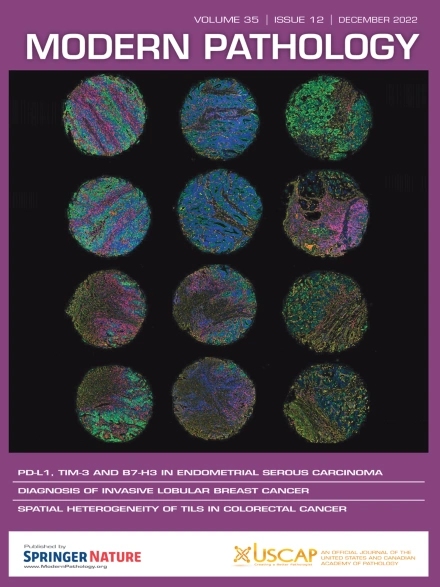Opening the Black Box: Spatial Transcriptomics and the Relevance of Artificial Intelligence–Detected Prognostic Regions in High-Grade Serous Carcinoma
Abstract
Image-based deep learning models are used to extract new information from standard hematoxylin and eosin pathology slides; however, biological interpretation of the features detected by artificial intelligence (AI) remains a challenge. High-grade serous carcinoma of the ovary (HGSC) is characterized by aggressive behavior and chemotherapy resistance, but also exhibits striking variability in outcome. Our understanding of this disease is limited, partly due to considerable tumor heterogeneity. We previously trained an AI model to identify HGSC tumor regions that are highly associated with outcome status but are indistinguishable by conventional morphologic methods. Here, we applied spatially resolved transcriptomics to further profile the AI-identified tumor regions in 16 patients (8 per outcome group) and identify molecular features related to disease outcome in patients who underwent primary debulking surgery and platinum-based chemotherapy. We examined formalin-fixed paraffin-embedded tissue from (1) regions identified by the AI model as highly associated with short or extended chemotherapy response, and (2) background tumor regions (not identified by the AI model as highly associated with outcome status) from the same tumors. We show that the transcriptomic profiles of AI-identified regions are more distinct than background regions from the same tumors, are superior in predicting outcome, and differ in several pathways including those associated with chemoresistance in HGSC. Further, we find that poor outcome and good outcome regions are enriched by different tumor subpopulations, suggesting distinctive interaction patterns. In summary, our work presents proof of concept that AI-guided spatial transcriptomic analysis improves recognition of biologic features relevant to patient outcomes.

 求助内容:
求助内容: 应助结果提醒方式:
应助结果提醒方式:


